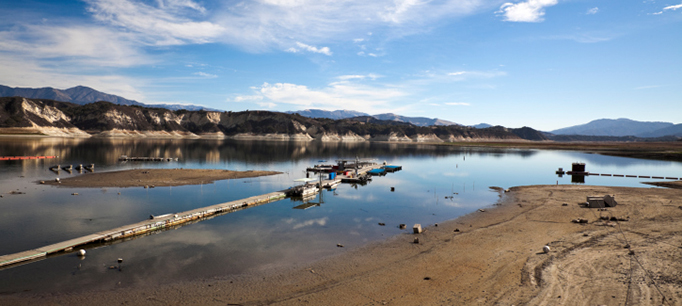
Four years into a historic drought, the environment and some rural communities are most at risk if hot, dry conditions persist. At an event in Sacramento last week, Ellen Hanak, director of the PPIC Water Policy Center, gave an overview of findings from the new report What If California’s Drought Continues, touching on the higher risk of large wildfires, increasing land subsidence from groundwater pumping, and the growing crisis affecting freshwater ecosystems and species. A panel of experts then dove deep into the drought’s perils—and success stories—before a capacity crowd.
Jeffrey Mount, senior fellow at PPIC and a co-author of the report, moderated the panel, which included Wade Crowfoot, deputy cabinet secretary and senior advisor to Governor Brown; Laurel Firestone, cofounder and co-executive director of the Community Water Center; and Kevin Hunting, chief deputy director of the California Department of Fish and Wildlife.
Asked to describe the successes and “pleasant surprises” in the state’s efforts to manage the drought, Hunting said his department has had to redefine success. “In the past success for us would be stable populations, recovering populations of endangered species,” he said. “Unfortunately, we’re in a situation now where success means avoiding extinctions … and really, plugging the gaps in the biggest risk areas.”
He said the agency has also brought creative approaches to managing fisheries and wildlife with a dwindling amount of water, including partnering with private water users to deliver water at critical times to support fish and waterbirds.
Firestone said major strides have been made in state-run efforts to get emergency water supply to rural communities facing water shortages. Beyond the state’s programs, she cited the efforts of volunteer and local agencies in these communities—”local people just trying to help their neighbors.”
Crowfoot gave his short list of drought successes, topped by water conservation across the state. “The real heroes of the California drought are actually everyday Californians,” he said, noting the latest water conservation statistics showing a statewide reduction in water use by over a quarter. He also cited the work of local water agencies, legislation—such as groundwater management reform—that crossed political boundaries, and unprecedented cooperation by state and federal agencies.
The panelists noted that much more needs to be done to both build on these successes—and strengthen efforts to address the challenges of continued drought.


